Some examples of licensee flexibility catch Start Licensing’s Ian Downes’ eye this week.
Licensees have to be more flexible these days in their approach to product, categories and NPD.
Licensees tend to be more multi-product in their approach. They tend not to be in strict product silos these days. This is in part due to the fact that retailers want fewer suppliers, part due to the changing face of retail (think about the nature of bookshops these days for example) and the fact that sourcing capabilities have improved.
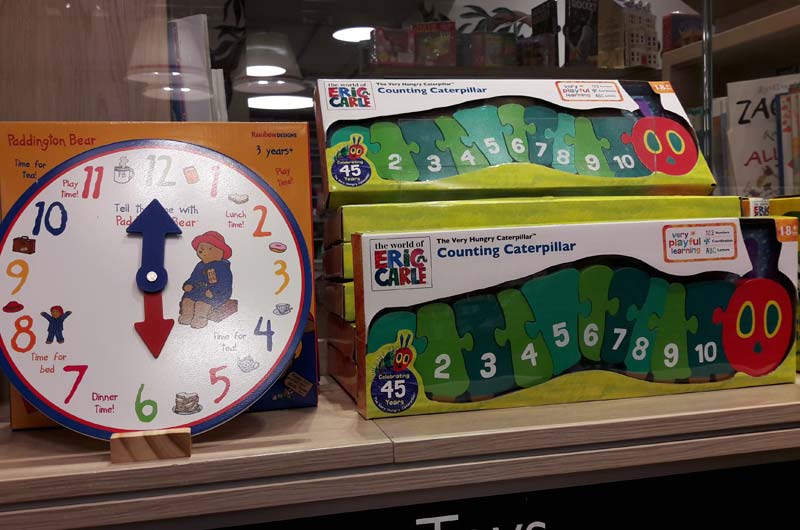
Rainbow Designs are a good example of this. I noticed in Foyles this week that Rainbow Designs, who started out life as a plush company, had (at least) two wooden toy and gift products in store – one was a Very Hungry Caterpillar Counting Caterpillar numbering counting toy and the other a Paddington ‘My First’ clock. Both items were well designed and looked good on shelf.
I expect that we will see more multi tasking from licensees in the future; indeed rights owners and agents are probably aligned with this development as well because it helps with management and communication.
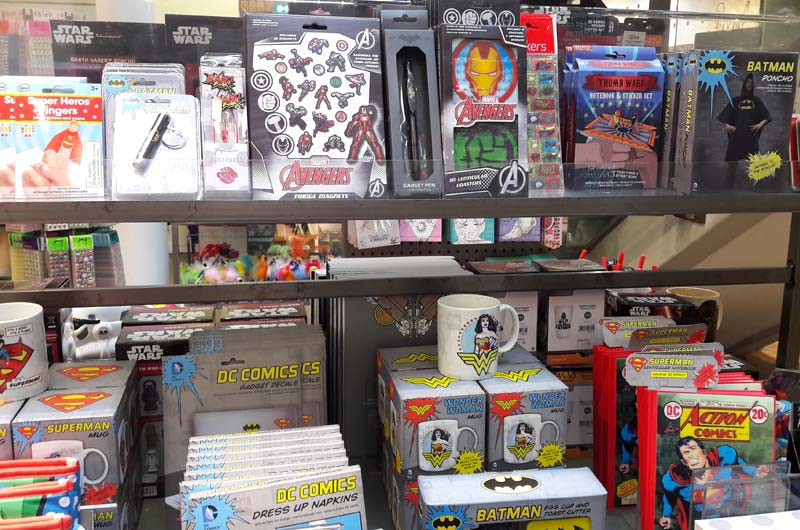
I was pleasantly surprised to see Paperchase carrying a large range of DC Comics gift products (and also some Marvel lines) – the range featured characters such as Wonder Woman.
I was surprised on a couple of levels: one that the product selection seemed slightly different from Paperchase’s normal fare and second that Paperchase has traditionally been quite resistance to ‘mainstream’ licences. They have really backed this range with a lot of space and a deep range of product. Maybe this is a signal that Paperchase are looking to use licensing in a more tactical way – this product range would have a lot of appeal to the ‘student market’ I imagine and is in-store during the back to college period.
As noted before, Paperchase have ranges from Mr Men Little Miss, London Underground and A – Z in store at the moment. From a Licensing PLC point of view it is good to see them using licensing more and the products they have selected fit into store well and they have mixed their own designs with bought in product well.
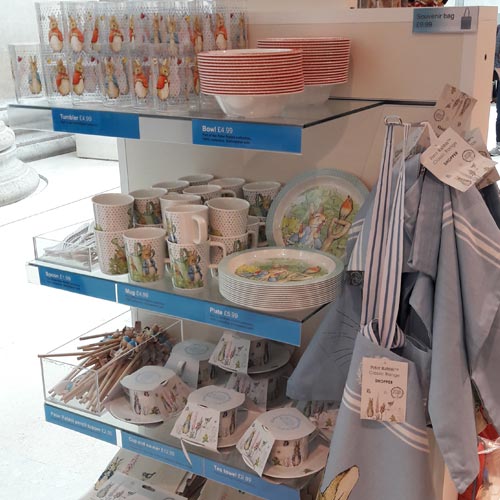
A further example of how licensors and licensees are pushing the boundaries for retail distribution was the presence of a broad range of Peter Rabbit giftware in the British Museum shop. I am not sure if this ties into an exhibition, but the product was featured in three of four locations in the main museum store and is a great example of developing new retail outlets for licensing.
Given the international profile of visitors to the British Museum it is a good move – Peter Rabbit is an internationally successful property and visitors to the museum from countries like Japan will respond well to the product.
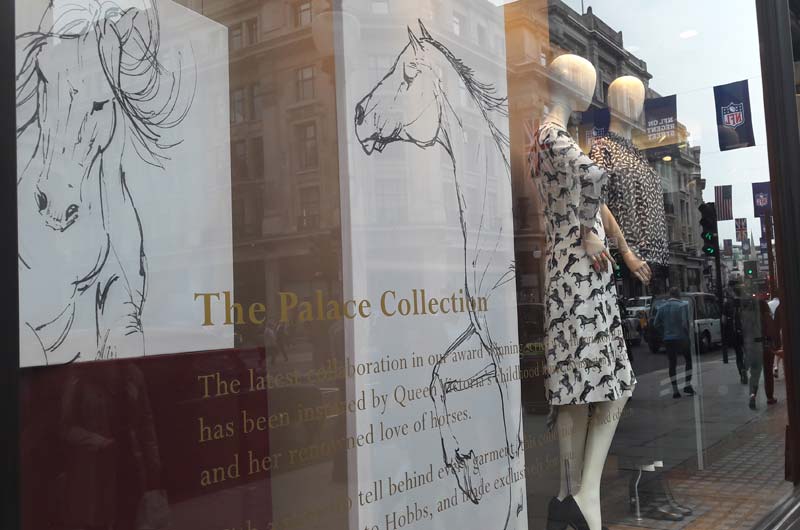
I spotted two very interesting examples of brand and retail ‘collaborations’ on Regent’s Street this week. First was a partnership between British fashion brand Hackett and luxury car brand Aston Martin. This was communicated via window displays including an eyecatching Aston Martin parked in a shop window and was translated into a signature apparel range.
The other was between Hobbs and Historic Royal Palaces. This partnership centred on Queen Victoria’s love of horses and her childhood home of Kensington Palace. This was the inspiration for a ‘unique collection’ in Hobbs. These seemed to be two well thought out partnerships that fitted together well and were being used cleverly to create retail interest. Given the character of Regent’s Street, these partnerships were communicated in a big and bold way that attracted a lot of consumer interest.
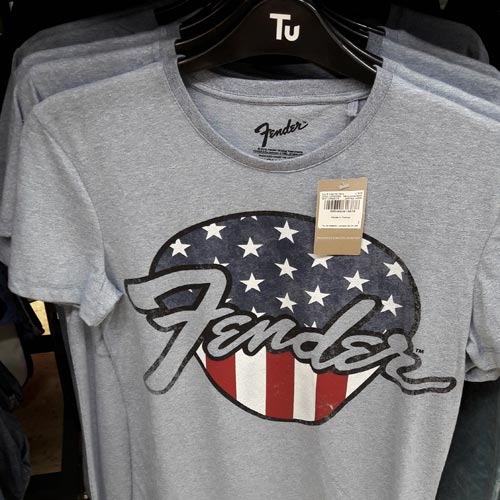
It is always good to see new brands featured in completive licensing sectors – this week I saw the classic and iconic guitar brand Fender featured on a t-shirt by Bioworld in Sainsbury’s.
It was refreshing to see a new design adding some diversity to the category and it was a good reminder that music and music brands offer licensees and retailers a lot of potential, especially in categories such as apparel and accessories.
I am still waiting for The Smiths to be launched in the fast fashion market — they would be guaranteed at least one sale… I Want the One I Can’t Have.
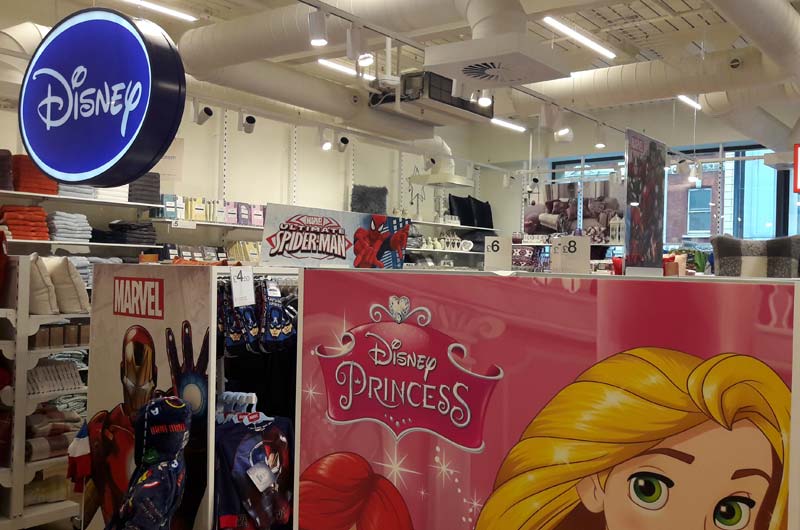
Disney’s licensing activity caught my eye a couple of times this week – once while in Matalan. In their Oxford Street branch Disney seem to have ‘taken over’ the childrenswear department entirely. Posters, shelf talkers and header cards were branded entirely with Disney collateral and the shelves filled accordingly with Disney product (although I did spot some Paw Patrol apparel).
I think Disney have to be applauded for this total licensing approach – it is an effective business model. It frustrates the competition no doubt, but this is not Disney’s problem – it is a sign of the strength of Disney in the market and is a demonstration of how it is tougher to break into retail.
My observation here is that licensees should be thinking of nurturing some other properties, partnerships and retailers: the ‘collabs’ I mentioned earlier show that licensing can work in different ways in different retailers. Nurturing other properties will allow the licensees to spread their risk and hopefully create opportunities that they can grow alongside their existing business commitments. It is a form of future proofing.
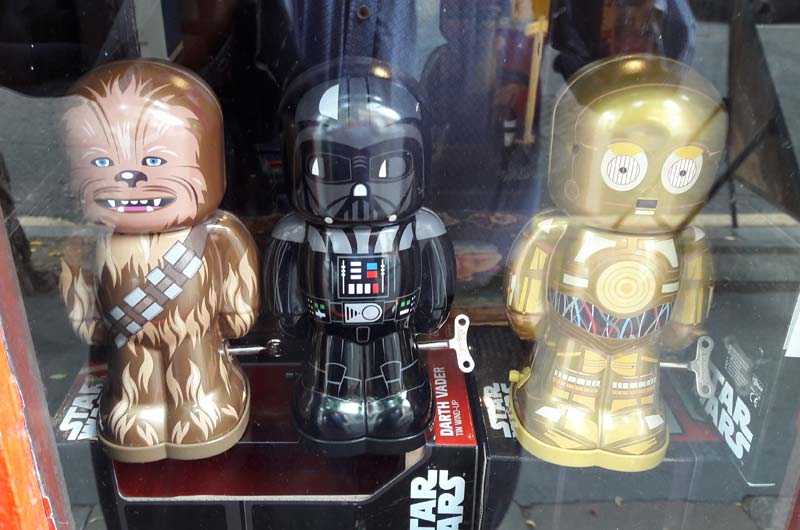
I also saw a range of Star Wars tin ‘clockwork’ Star Wars toys this week. They were on sale in Pollock’s Toy Museum Shop (near Goodge Street – worth a visit) and produced by Schylling Toys. They looked very good and had a retro vintage feel to them.
I thought it was interesting to see a brand like Star Wars going back in time toy-wise to develop some very traditional ‘old school’ toys. Bearing in mind the fan and collector market for Star Wars, it makes good sense and is a further example of the reach of Star Wars – it seems toycos are keen to feel the force whenever they can. I can see these Star Wars tin toys adorning desks and Man Caves – looking good alongside more contemporary toys such as Funko vinyls.
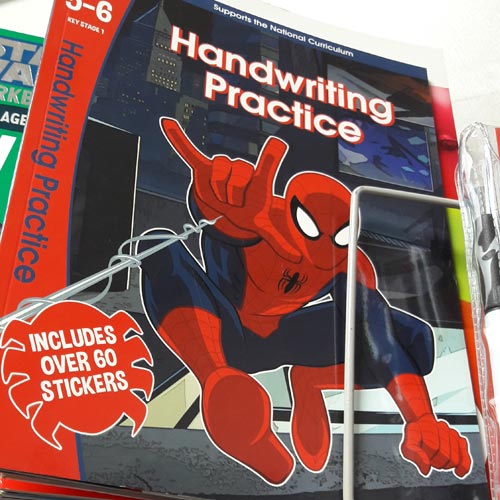
Finally, it is always good to see licensed characters being used in positive and proactive ways. I spotted a range of Handwriting ‘skills’ books for 5 to 6 year olds featuring Spider-Man. I think this is a great example of a popular character being used in a proactive and positive way. I can imagine parents and teachers finding Spider-Man a useful teaching companion.
It is a small reminder that we should all be thinking about what influence characters can have on children’s lives – it is good to know this can be harnessed positively and something we should think about in our working lives a bit more I think.
Ian Downes runs Start Licensing, an independent brand licensing agency. His Twitter handle is @startlicensing – he would welcome your suggestions for what to look out for.































